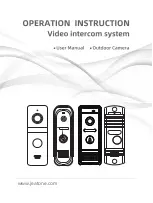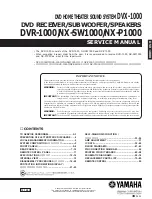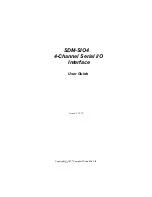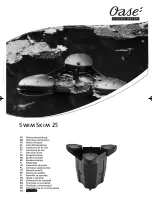
-5-
NOTE ON BEFORE STARTING REPAIR -1/2
1. Forced discharge of electrolytic capacitor of power supply block
When repair is going to be attempted in the set that uses relay circuit in the power supply block, electric potential is kept charged across the
electrolytic capacitors (C101, 102) even though AC power cord is removed. If repair is attempted in this condition, secondary defect can occur.
In order to prevent the secondary trouble, perform the following measures before starting repair work.
Discharge procedure
1 Remove the AC power cord.
2 Connect a discharging resistor at an end of lead wire that has
clips at both ends. Connect the other end of the lead wire to
metal chassis.
3 Contact the other end of the discharging resistor to the
positive (+) side (+VH) of C101. (For two seconds)
4 Contact the same end of the discharging resistor as step 3 to
the negative (-) side (-VH) of C102 in the same way.
(For two seconds)
5 Check that voltage across C101 and C102 has decreased to
1 V or less using a multimeter or an oscilloscope.
Select a discharging resistor referring to the following table.
Note: The reference numbers (C101, C102) of the electrolytic capacitors can change depending on the models. Be sure to check the reference numbers
of the charging capacitors on schematic diagram before starting the discharging work.
2. Check items before exchanging the MICROCOMPUTER
Be sure to check the following items before exchanging the MICROCOMPUTER. Exchange the MICROCOMPUTER after confirming that the
MICROCOMPUTER is surely defective.
2-1. Regarding the HOLD terminal of the MICROCOMPUTER
When the HOLD terminal (INPUT) of the MICROCOMPUTER is "H", the MICROCOMPUTER is judged to be operating correctly.
When this terminal is "L", the main power cannot be turned on. Therefore, be sure to check the terminal voltage of the HOLD terminal before
exchange.
When the MICROCOMPUTER is not defective, the HOLD terminal can also go "L" when the POWER AMPLIFIER has any abnormalities
that triggers the abnormality detection circuit on the MAIN C. B. that sets the HOLD terminal to "L".
• Good or no good judgement of the MICROCOMPUTER
1 Turn on the AC main power.
2 Confirm that the main power is turned on and the HOLD terminal of the MICROCOMPUTER keeps the "H" level or not.
3 When the HOLD terminal is "L" level, the abnormality detection circuit is judged to be working correctly and the MICRO
COMPUTER is judged to be good.
Fig-1
MAIN C.B
D101
C101
C102
3
4
2
2
Charging voltage (V)
Discharging
Rated power (W)
Parts number
(C101, 102)
resistor ( )
25-48
100
3
87-A00-247-090
49-140
220
5
87-A00-232-090
Summary of Contents for CX-NR71
Page 25: ... 25 SCHEMATIC DIAGRAM 1 5 MAIN 1 2 AMP SECTION ...
Page 28: ......
Page 42: ... 42 LCD DISPLAY 1 2 HUA 11MM42T GRID ASSIGNMENT ...
Page 43: ... 43 LCD DISPLAY 2 2 HUA 11MM42T ANODE CONNECTION PIN CONNECTION ...
Page 44: ... 44 IC BLOCK DIAGRAM 1 1 IC LC72131D N IC BU2092F IC M61518FP IC LA1845N A IC BU1920FS ...
Page 57: ...2 11 IKENOHATA 1 CHOME TAITO KU TOKYO 110 8710 JAPAN TEL 03 3827 3111 0251431 ...






































